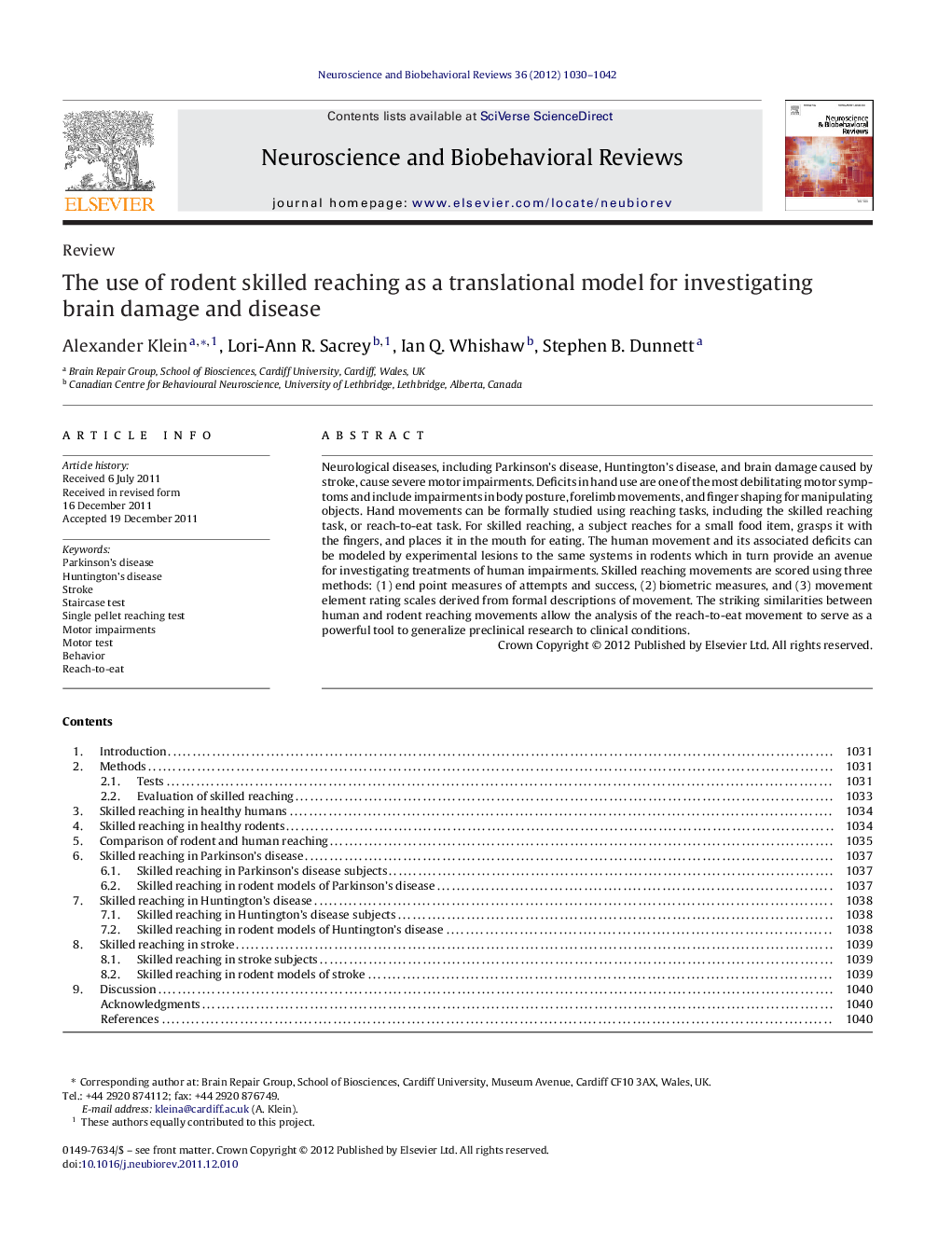| کد مقاله | کد نشریه | سال انتشار | مقاله انگلیسی | نسخه تمام متن |
|---|---|---|---|---|
| 937566 | 924517 | 2012 | 13 صفحه PDF | دانلود رایگان |

Neurological diseases, including Parkinson's disease, Huntington's disease, and brain damage caused by stroke, cause severe motor impairments. Deficits in hand use are one of the most debilitating motor symptoms and include impairments in body posture, forelimb movements, and finger shaping for manipulating objects. Hand movements can be formally studied using reaching tasks, including the skilled reaching task, or reach-to-eat task. For skilled reaching, a subject reaches for a small food item, grasps it with the fingers, and places it in the mouth for eating. The human movement and its associated deficits can be modeled by experimental lesions to the same systems in rodents which in turn provide an avenue for investigating treatments of human impairments. Skilled reaching movements are scored using three methods: (1) end point measures of attempts and success, (2) biometric measures, and (3) movement element rating scales derived from formal descriptions of movement. The striking similarities between human and rodent reaching movements allow the analysis of the reach-to-eat movement to serve as a powerful tool to generalize preclinical research to clinical conditions.
► Skilled reaching is an excellent tool to study motor deficits in neurodegenerative diseases and after stroke.
► Rodent skilled reaching is homologue to human skilled reaching.
► Rodent reach-to-eat paradigm is easily translated into the human condition.
► Skilled reaching is sensitive to lesion and medical intervention.
► Easy applicable in humans and rodents.
Journal: Neuroscience & Biobehavioral Reviews - Volume 36, Issue 3, March 2012, Pages 1030–1042